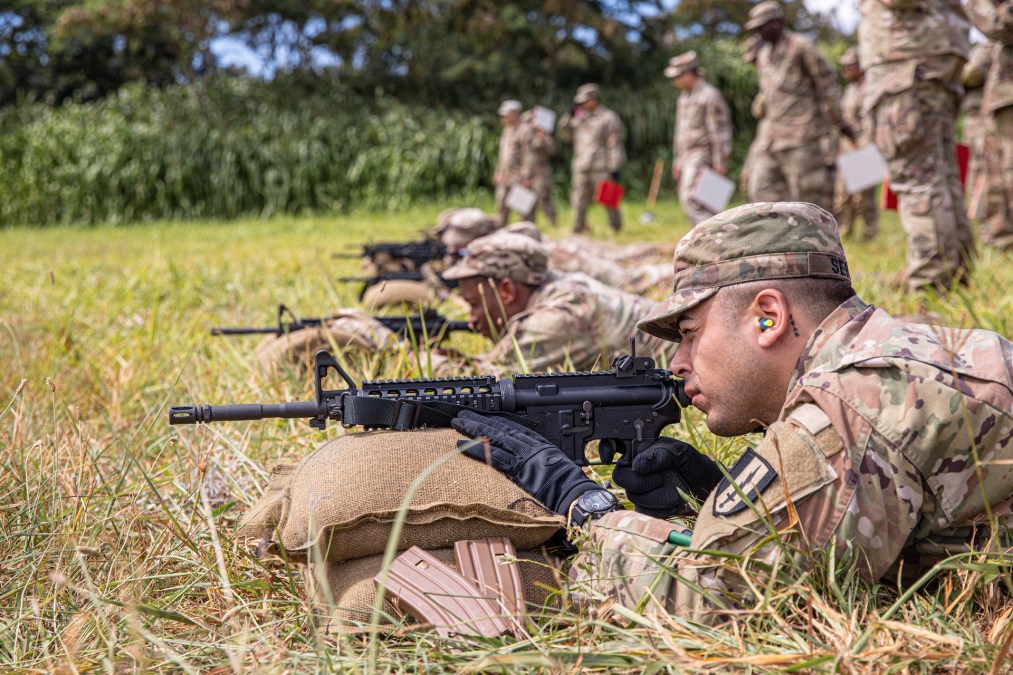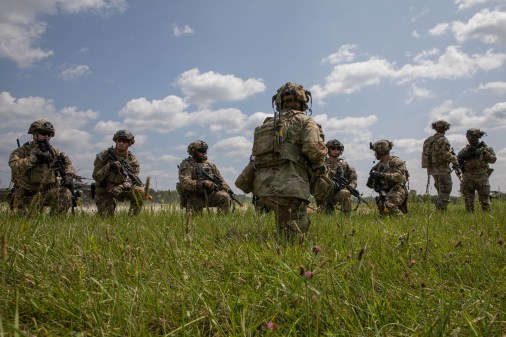Army taking modular, microservice approach to next-generation fires system

SAVANNAH, Ga. — As the Army is building a next-generation platform for soldiers to shoot targets, it’s angling to make three modular versions to serve different functions for various units.
The Army is modernizing its Advanced Field Artillery Tactical Data System (AFATDS), which provides fully automated support for planning, coordinating and conducting fires. While the system has been around for nearly a quarter century and still works, officials believe now is the time for a substantial update.
As part of what the Army is calling AFATDS AXS — or AFATDS Artillery Execution Suites — it wants to break AFATADS into three versions: fires support, tactical fire direction and technical fire direction.
The goal is to have a minimum viable product for fires support in fiscal 2025, first at the division headquarters, while the focus on the other two is still in the planning phases.
Each of the applications has a distinct purpose for different unit types and munitions, which are all included in the legacy version that currently exists, and there is very little practical overlap between them.
Officials said that while fires span the entire Army, each formation has different needs. Fires support deals mostly with maneuver commanders and how they control fires, while technical and tactical fire direction is geared more toward artillery including mathematical ballistic calculations.
By breaking these functions up, it can lessen the cognitive burden of soldiers, Army officials told DefenseScoop.
“We let them choose. That’s going to be a big model going forward is let the unit and let the soldier decide what functions they need from that microservice approach,” Lt. Col. Timothy Godwin, product manager for fire support command and control at Program Executive Office Command, Control, Communications-Tactical, told DefenseScoop at the Army’s Technical Exchange Meeting Dec. 11 in Savannah, Georgia. “There may be, at some echelons, where they want visibility of other ones because it makes sense, but at the lowest level where that soldier at the gun line is only worried about technical fire direction, they don’t need to worry about all the other stuff and they get to choose and lets the units have a lot of say in how the system actually operates, versus today, they got to take it as is, warts and all.”
The Army is adopting more agile software development practices and embracing modular microservice approaches.
Officials said that AFATDS wasn’t built with modularity in mind 30 years ago. As new capabilities or munitions come online, it can be very difficult to update the code in the existing system.
“AFATDS is as we know it today has been built, it’s been 30 years. Every year we modernize it, we add capability,” Col. Matt Paul, project manager for mission command at PEO C3T, told DefenseScoop at the event. “The code is sort of organized, we call it like spaghetti code. Anytime we want to add a new feature, a new function, a new mutation, we basically have to untangle the code, add what we need to add and then put it all back together, which is a very clunky and cumbersome process that could take a whole year. To integrate a new munition could take us a whole year to update AFATDS. It’s not very adaptable, it’s not very agile.”
The goal is if a new capability is developed, an update will be as simple as adding a new line of code to the microservice, similar to how individual applications are updated on smartphones.
“A lot of my legacy capabilities today, they’re like Jenga sets. These are like Jenga set-like architectures and we’re trying to evolve away from that to more of like a Lego set that’s plug and play,” Paul said.
The Army recently closed on a request for information in late November regarding the system’s future with great interest and positive responses. Paul said the interest received surpassed that of previous RFIs.
Industry has been supportive of the Army’s multivendor approach for AFATDS AXS, which increases competition and the industry base pool, an overall net positive.
“It’s my experience that, I’ve been doing this for 16 years, it’s always better to work with multiple vendors than to just work one,” Paul said.
This is especially important given the agile and software-based direction the Army is taking. There are only a handful of vendors suited to work on AFATDS as it currently exists. However, those traditional defense vendors likely aren’t as well versed in the world of software approaches, user interfaces, artificial intelligence.
“Given our pivot to this new modular strategy, adopting agile principles, that really opened the door for the industry writ large to play a role to make a contribution into this new program. Vendor A may not be experts in the fires math, but maybe they’re really good at building user interfaces, or human systems integration, things like that,” Paul said. “They have an opportunity to play in the new acquisition strategy. But they’re going to have to team with other vendors that do have those skill sets and the know-how in the fires math, for example … creating conditions by which they can work together to solve complex problems as part of our agile process.”






